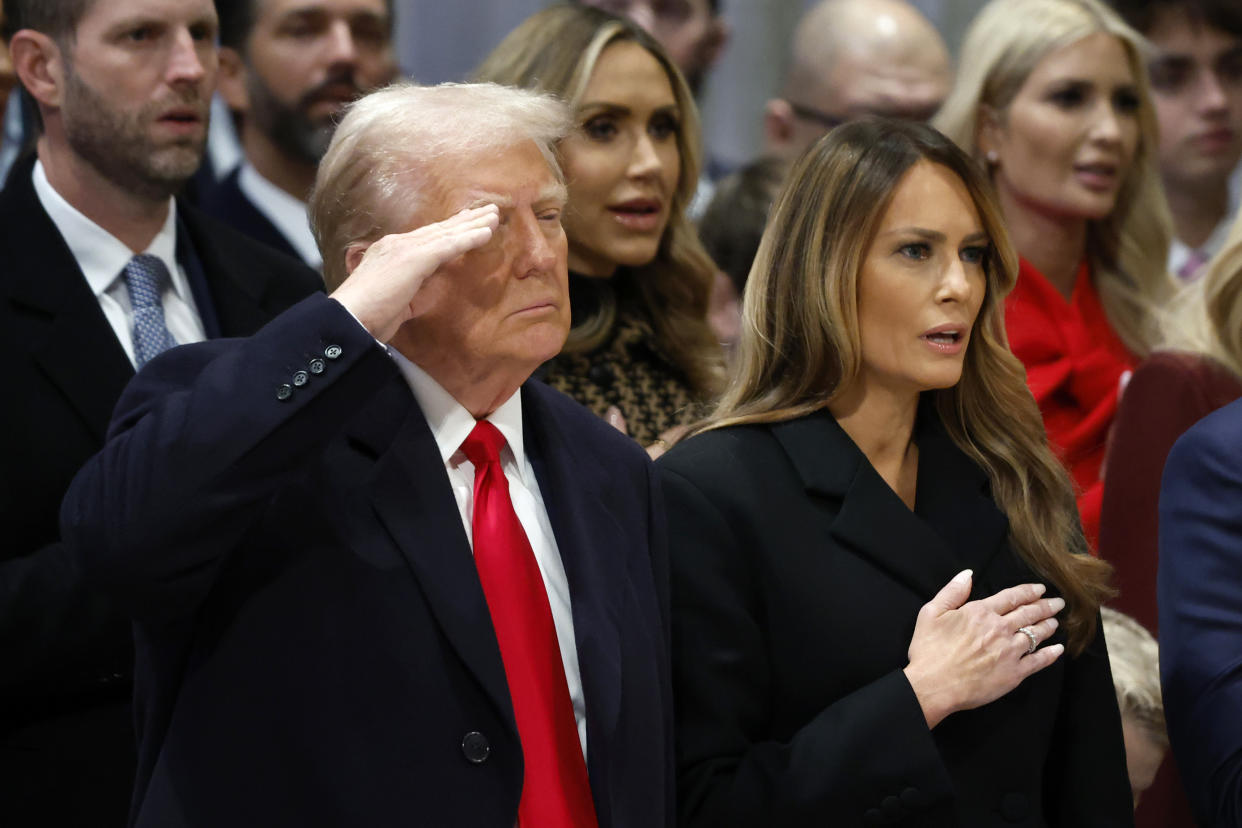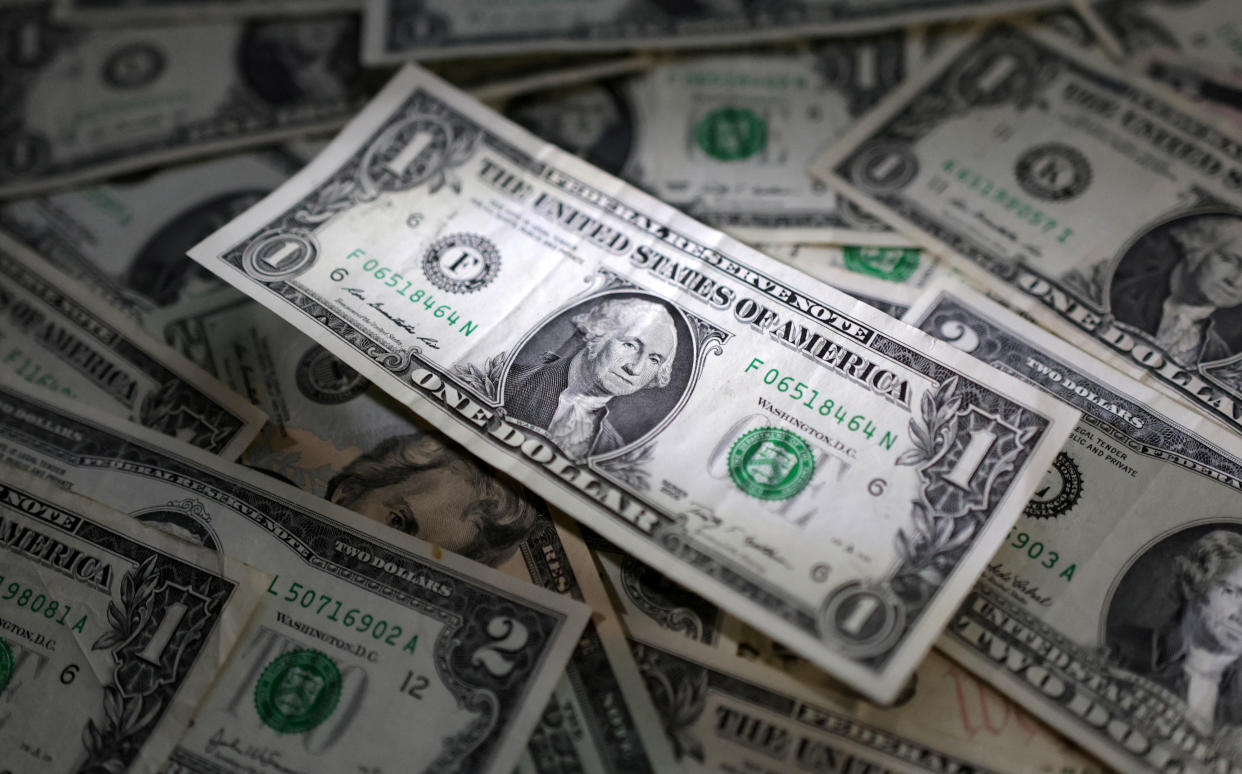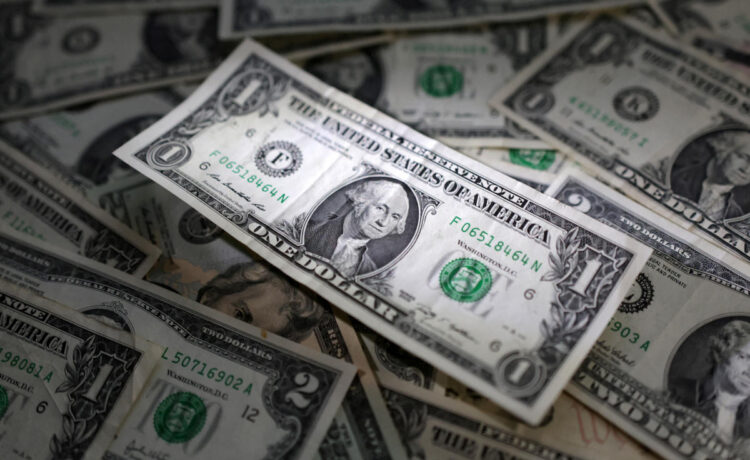The US dollar (DX=F, DX-Y.NYB) on Tuesday traded near the lows it experienced the day prior as investors weighed the latest tariff talk from President Trump.
On Monday, the dollar index experienced its largest drop since November 2023, retreating from near two-year highs as the president refrained from enacting broad-based tariffs on his first day in office.
The move surprised investors, as an emergency order would have allowed immediate tariff increases in contrast to the alternative process of investigations, which is likely to take longer to complete. Instead, Trump issued a memorandum on Monday directing federal agencies to evaluate US trade policy, which could eventually lead to blanket tariffs across a variety of trading partners down the line.
Later on Monday, the president said levies on Mexico and Canada could come as soon as Feb. 1, which initially pushed the dollar off its lows. The currency regained about half of its losses before erasing those gains.
“The dollar is incredibly sensitive to the tariff outlook right now,” Kyle Chapman, FX markets analyst at Ballinger Group, wrote in an email on Monday. “The new administration is already setting a tone suggesting that the fast-moving, shock-and-awe trade policy that Trump had promised is likely to be more measured than the market had expected.”
Chapman said the lack of day-one blanket tariffs “is the biggest clue yet that we could be peak dollar, although I would not get my hopes up just yet.”
Mohamed El-Erian, chief economic adviser at Allianz, told Yahoo Finance’s Morning Brief program that the dollar’s gains and losses signal a new normal for markets.
“The message is this is not a one-day event,” he said, noting both upside and downside risks exist. “This is something that’s going to remain with us.”
To that point, Morgan Stanley strategist Michael Zezas and economist Michael Gapen said in a note on Tuesday that Trump’s back-and-forth rhetoric “reminds us that vigilance is warranted as the US policy path could evolve quickly.” The team maintained its stance that any policy adjustments likely won’t be felt until the back half of the year.


The greenback’s price action has largely been driven by two main catalysts: Trump’s election and the subsequent Republican sweep, along with the recalibration of future Fed easing in the face of strong economic data.
After hitting a September low, the US Dollar Index, which measures the dollar’s value relative to a basket of six foreign currencies (the euro, Japanese yen, British pound, Canadian dollar, Swedish krona, and Swiss franc), has rallied nearly 10%. Since the election, it has climbed by about 5%.
Despite recent moves to the downside, Bank of America said it’s sensible for the market to continue to price in some tariff risk when it comes to the dollar.
“Even if tariffs are delayed, they are likely to be a key policy pillar for the new administration,” wrote Adarsh Sinha, lead FX and rates strategist at BofA. “More importantly, uncertainty around the timing of tariff increases remains.”


But a strong dollar could spell trouble for stocks.
“A stronger dollar is likely to add to a recurring phenomenon into earnings season — an increase in dispersion of earnings per share (EPS) revisions,” Morgan Stanley analyst Mike Wilson wrote in a note to clients last week.
In other words, a strong US dollar will adversely impact companies that do most of their business overseas, like consumer goods and household products, as it will lead to slower earnings growth over time due to unfavorable foreign exchange conversions.
El-Erian added a strong dollar could also erode domestic competitiveness and hurt emerging markets that borrow in dollars but generate income in local currency.
“What we’d like to have is a stable dollar,” he said. “But getting there means that other countries have to get their act together. If Europe continues to lag, if China continues to lag, then the pressure will be on the dollar to get stronger.”
“Ultimately, it’s going to be a race between the realities of what President Trump inherits and the extent to which certain policies could make things more complicated, [like] tariffs,” he said.
Alexandra Canal is a Senior Reporter at Yahoo Finance. Follow her on X @allie_canal, LinkedIn, and email her at [email protected].
Correction: A previous version of this article misspelled Michael Gapen’s name. We regret the error.
Click here for the latest stock market news and in-depth analysis, including events that move stocks
Read the latest financial and business news from Yahoo Finance
















